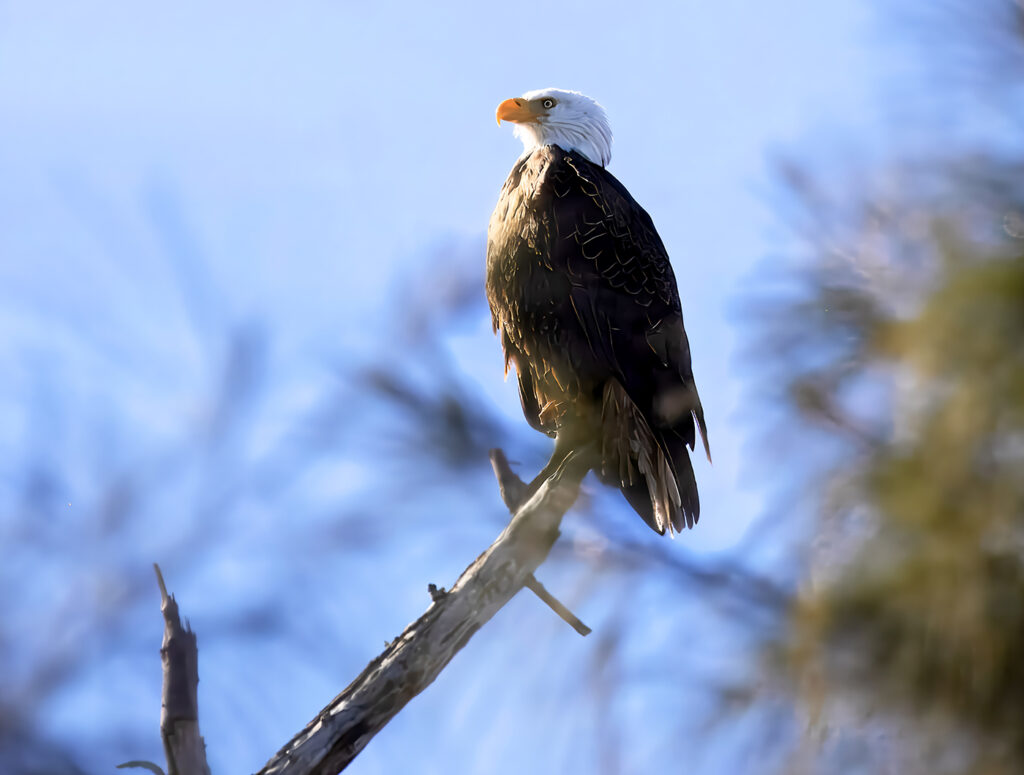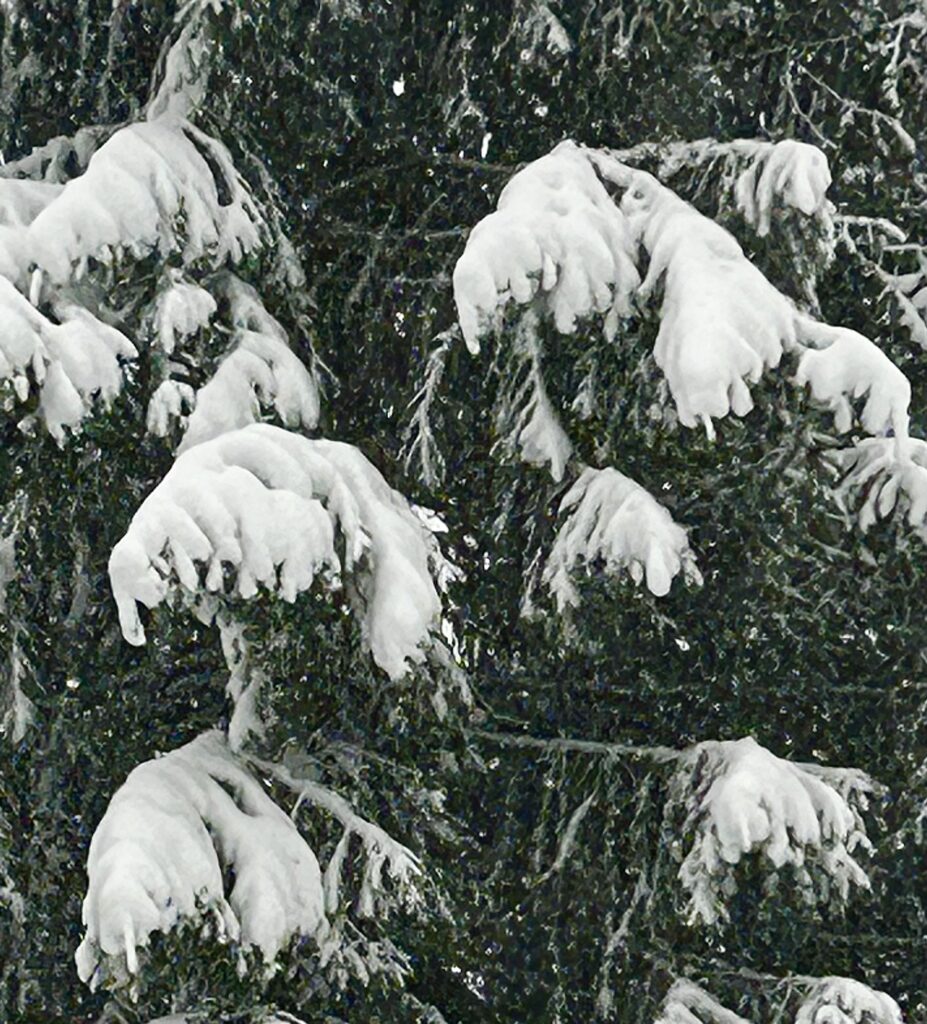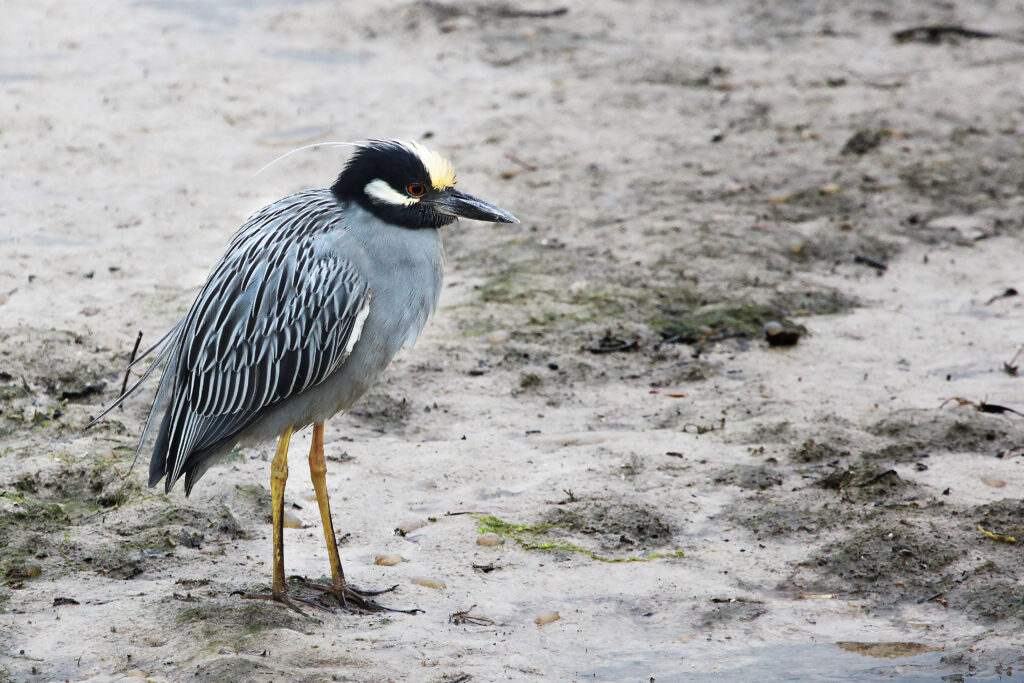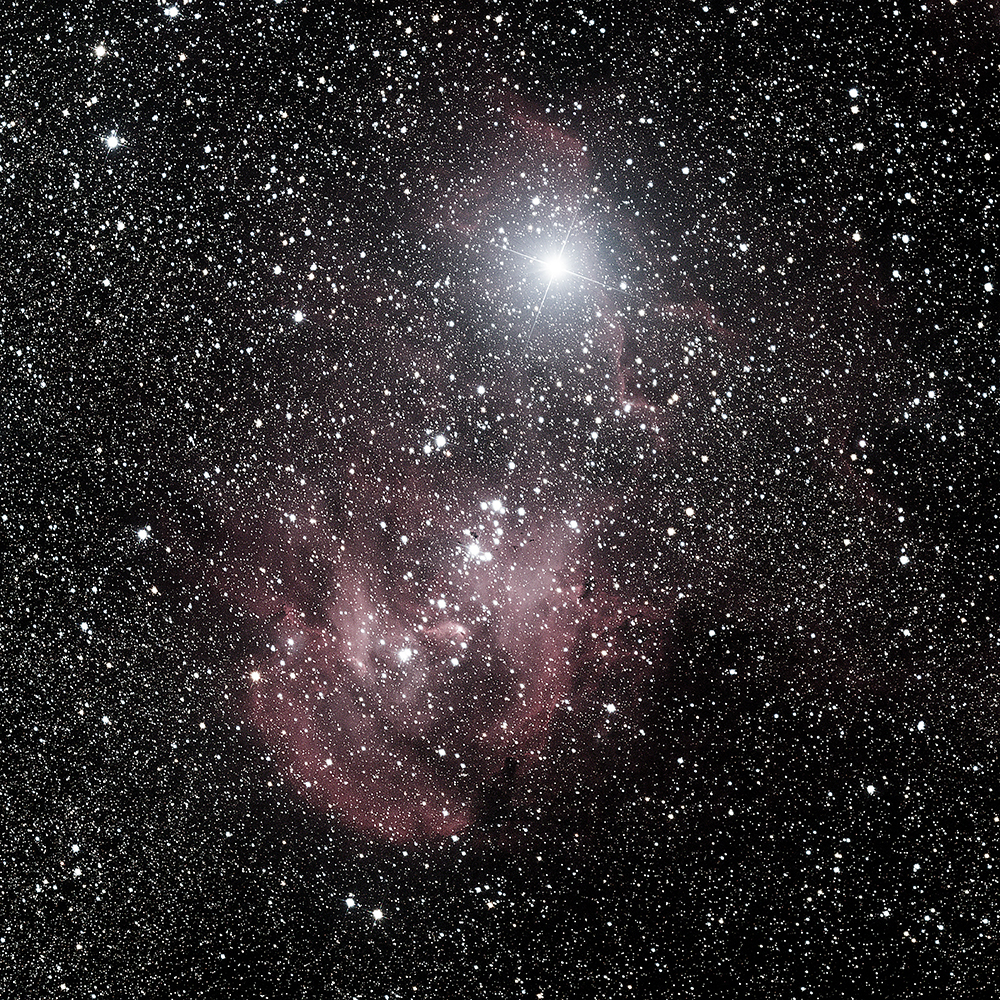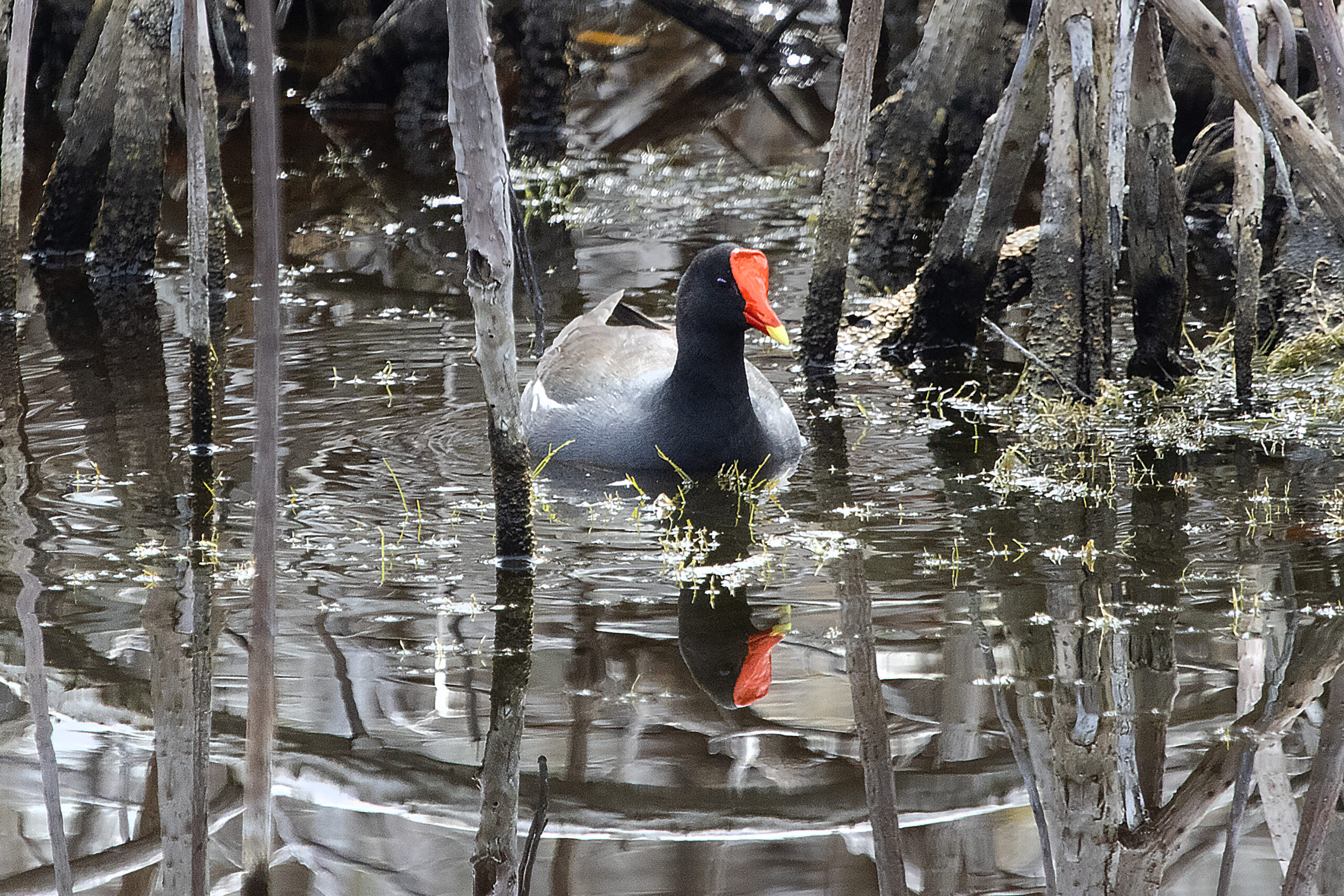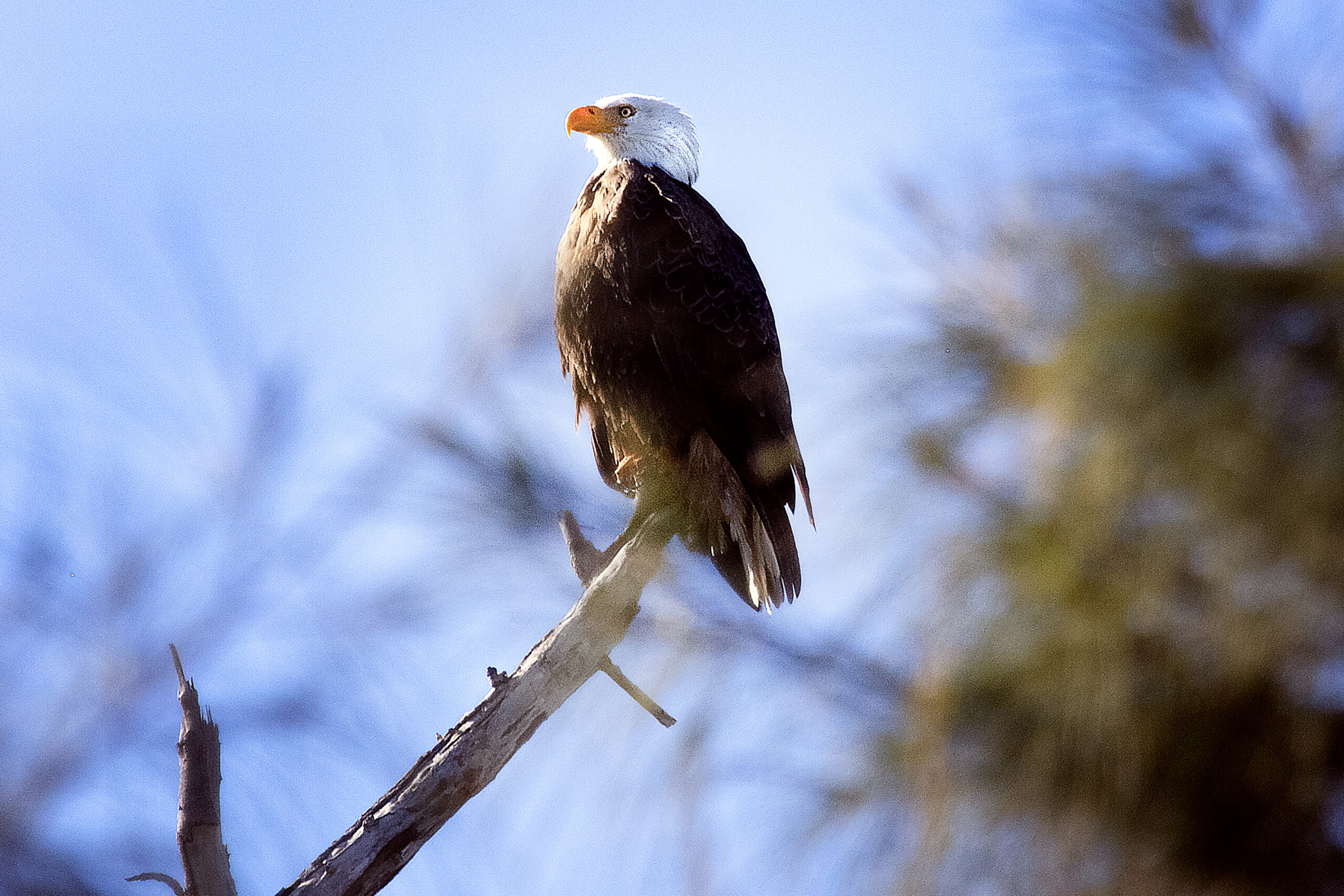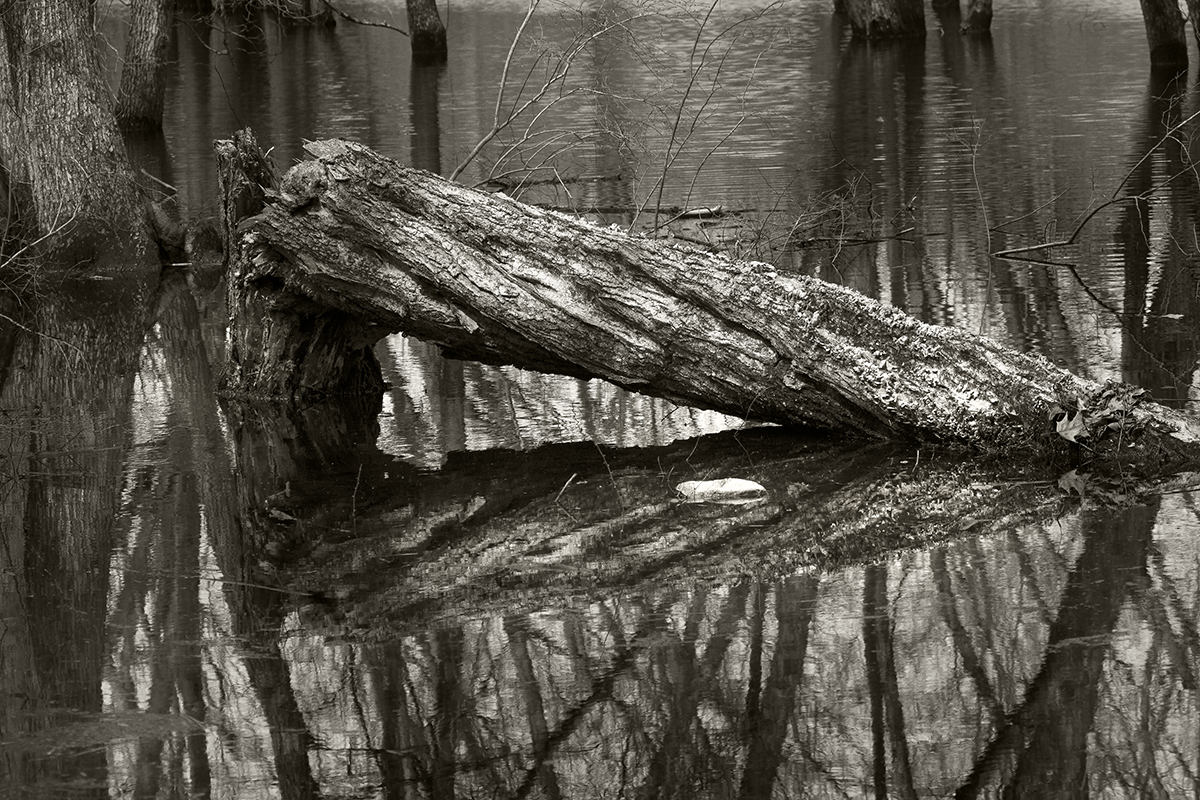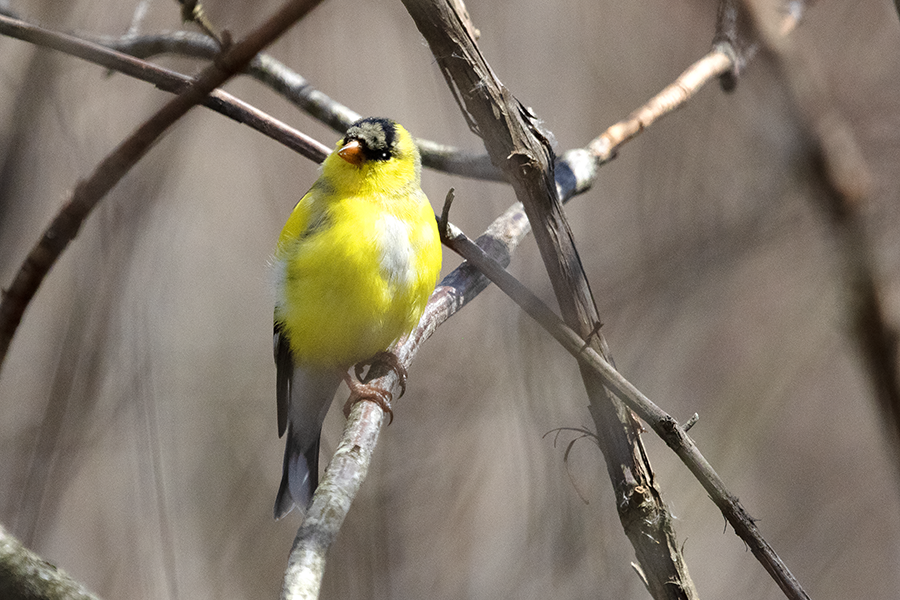Unless you’re very lucky or very good as a bird photographer you find yourself needing to do some image sharpening – no shame in that! Several years ago I tried Topaz Sharpen AI and decided that that I could really do as well with Adobe Photoshop Smart Sharpen. I have been following the development of the Topaz products for the last few years and recently decided that it was worth a revisit.
So I downloaded Topaz PhotoAI and began the adventure. This is a complex story, but I thought I would begin with seeing what the software would do for me straight out of the box. So I opened up the original version of the bald eagle image that I posted a few days ago and sharpened it on Topaz. This was a picture that I wasn’t quite happy with from my recent Florida trip. For reference the Adobe Photoshop process image is shown in Figure 1.
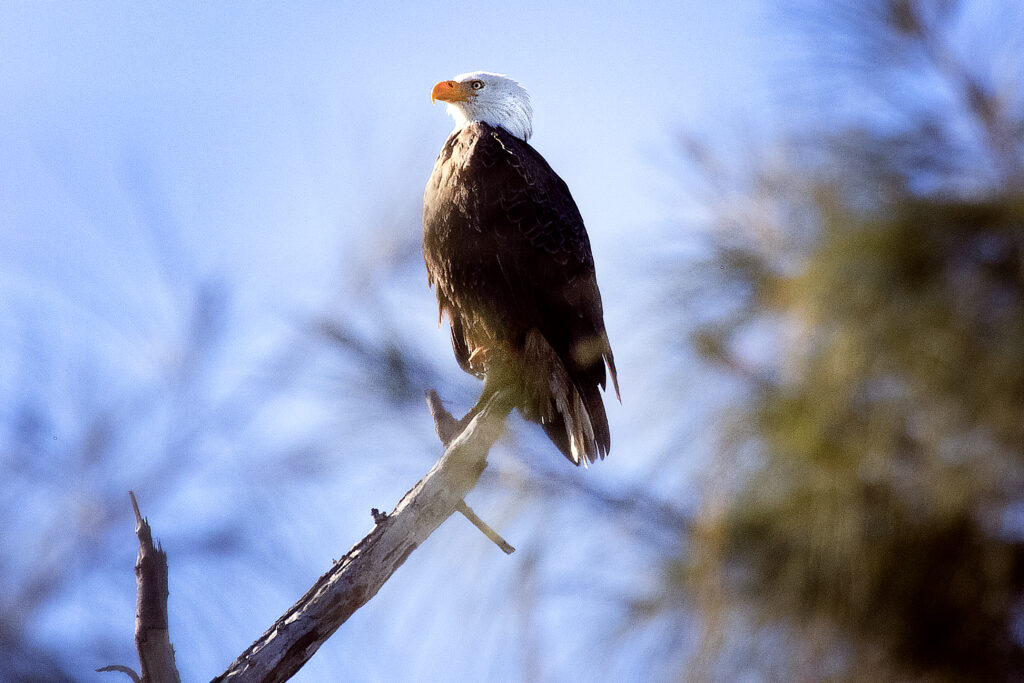
There are three issues with standard sharpening algorithms. First, if you’re not careful, you can get a kind of comic book effect; second you tend to sharpen the noise as well as the subject, the image becomes annoyingly grain; if the main subject of an image is a small part of the image, say a person’s face or a bird’s head, the resolution is poor and only becomes worse on sharpening.
Now imagine that the photograph was a painting, a talented painter could get rid of the noise and increase the resolution of the image. Increase the resolution? The intelligent painter is applying his/her knowledge of faces and bird heads.
The key word is, of course, intelligent. An AI program takes the part of the painter, recognizing noise features from true feature, adds pixels and intelligently fills them. That last process is referred to as upscaling. An upscaled image has many many more pixels than the original image.
So using Topaz PhotoAI and with very little knowledge of it, I created the improved image of Figure 2. Actually, I first sharpened with Topaz PhotoAI and then processed, but didn’t further sharpen it, with Adobe Photoshop. The noble eagle is now, well more noble. There is less noise and there are four times as many pixels. Although this is somewhat lost by image compression for loading on the website. To see the sharpening and noise reduction zoom in on the eagle’s head. I am a bit concerned about the eye possibly being over worked, but I need time to learn.
